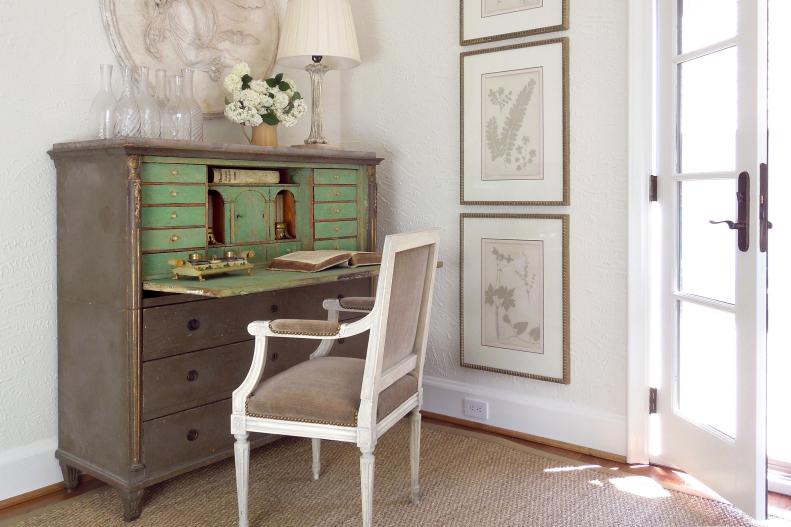1 / 10
Multifunctional Design
Most Gustavian pieces were painted in a pale gray, but it’s rare to find a piece wearing its original paint, since the majority of pieces have been repainted multiple times throughout their life. This beautiful dresser/desk combination owned by antiques expert and designer Loi Thai is wearing a darker gray paint on the exterior with an unexpected minty-green interior.









